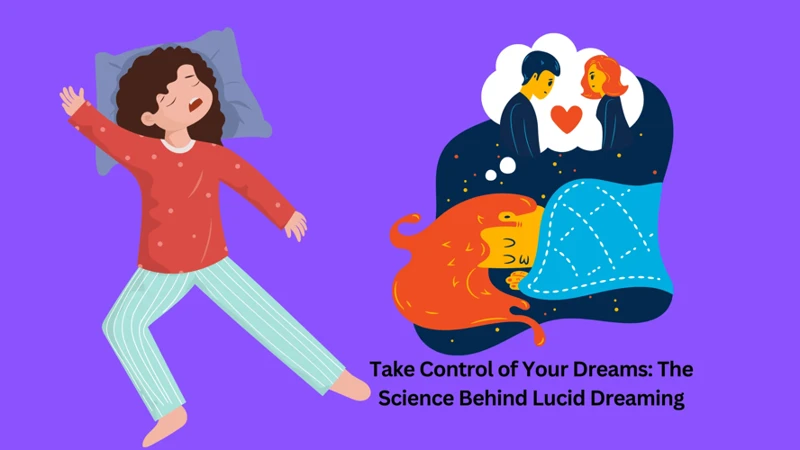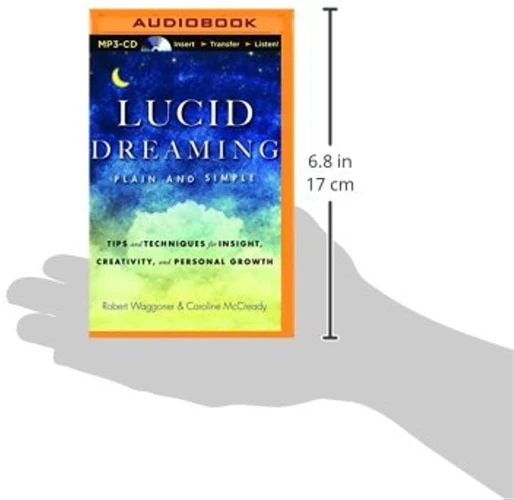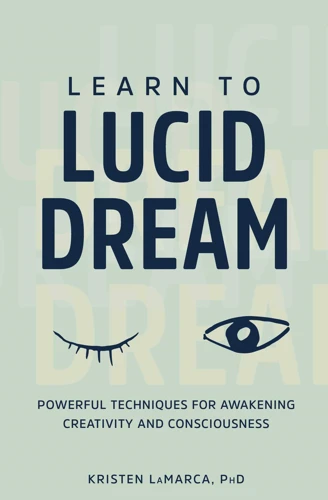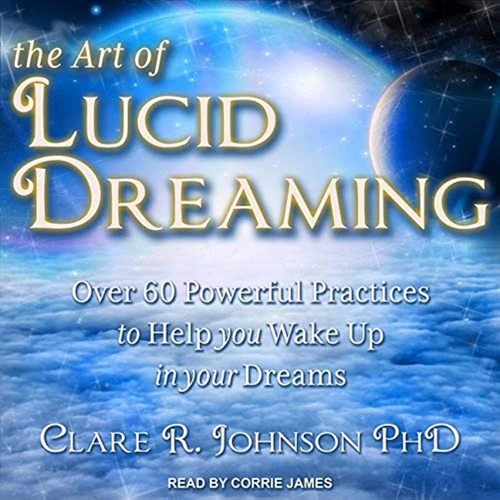Have you ever found yourself in a dream so vivid and real that you were convinced it was actually happening? What if I told you that it’s possible to become aware of such dreams and even take control of them? Welcome to the fascinating world of lucid dreaming. Lucid dreaming has been practiced for centuries and has recently gained popularity as a tool for personal growth, creativity, and sleep health. In this article, we will explore the definition and history of lucid dreaming, its benefits and techniques, tips for successful lucid dreaming, and how it can be leveraged to improve your waking life. Join us on this journey to unlock the endless possibilities of your unconscious mind.
What is Lucid Dreaming?

Do you ever find yourself questioning whether you’re dreaming or awake? Are you curious about the mysteries of the unconscious mind and how you can tap into its power? If so, you may have heard of this incredible phenomenon known as lucid dreaming. Lucid dreaming is a unique state of consciousness in which the dreamer realizes they are dreaming and can take control of their dreams. This captivating experience has been documented across various cultures and time periods, and continues to intrigue both scientists and enthusiasts alike. Let’s delve deeper into the world of lucid dreaming and uncover its secrets.
Definition of Lucid Dreaming
Lucid dreaming is a state where the dreamer is aware that they are dreaming and can often control the content of the dream. The definition of lucid dreaming can be broken down into two parts: the awareness of dreaming and the ability to control the dream.
In an awareness of dreaming state, the dreamer realizes that they are in a dream while it is occurring. This realization can be triggered by something that seems odd or out of the ordinary in the dream, or it can be achieved through focused training and practice. This type of awareness allows the dreamer to actively participate in the dream and have a certain level of control over the dream scenario.
The ability to control the dream is what sets lucid dreaming apart from more typical dreaming experiences. In a lucid dream, the dreamer can often influence the progression of the dream and make decisions about their actions and surroundings. This can range from small changes like choosing what to say to a dream character, to more dramatic alterations like flying or teleporting.
The definition of lucid dreaming involves a heightened level of awareness and control within the dream state. Through lucid dreaming, the dreamer can have a more immersive and fulfilling dream experience, and potentially gain greater insight into their subconscious thoughts and desires.
History of Lucid Dreaming
Lucid dreaming is not a new phenomenon. In fact, the history of lucid dreaming can be traced back to various ancient cultures and civilizations. Here is a summary of some of the most notable instances of lucid dreaming throughout history:
| Time Period | Notable Mention |
|---|---|
| Ancient Greece | Artemidorus of Daldis, a Greek philosopher and author, wrote the ‘Oneirocritica’, a book on dream interpretation which included a section on lucid dreaming. |
| Tibetan Buddhism | The practice of Dream Yoga in Tibetan Buddhism emphasizes the importance of lucid dreaming as a way to achieve enlightenment. |
| Native American Culture | The Navajo tribe believed that dreams were a way to communicate with spirits and ancestors, and that lucid dreaming was a powerful tool for accessing this spiritual realm. |
| Modern Era | The term ‘lucid dreaming’ was coined by Dutch psychiatrist and writer Frederik van Eeden in the early 20th century. He conducted extensive research on the subject and documented his own experiences with lucid dreaming. |
As we can see, lucid dreaming has a rich and varied history, with different cultures and civilizations exploring its potential in their own unique ways. Today, we continue to build on this legacy and explore the many benefits that lucid dreaming can offer.
Why Lucid Dreaming is Important?

Lucid dreaming has piqued the interest of many individuals due to its potential benefits in enhancing daily life. The ability to be aware and in control of the dream world can provide tools for personal growth, creativity, and even better sleep quality. In this section, we will explore the significance of lucid dreaming and how it can positively impact waking life. Let’s delve into why this phenomenon is worth exploring in more detail.
Benefits of Lucid Dreaming
Lucid dreaming offers numerous benefits that go beyond just having fun while sleeping. Here are some of the profound advantages of lucid dreaming:
- Increased self-awareness: Lucid dreaming enhances your ability to observe and reflect on your thoughts and actions, leading to stronger self-awareness and mindfulness in waking life.
- Emotional healing: Through lucid dreaming, you can work through unresolved emotions and traumas that are holding you back in waking life by creating a safe space to confront and process them.
- Creative problem-solving: Lucid dreaming can be used to stimulate creativity and problem-solving abilities, as the dream world offers a limitless playground for exploring new ideas and perspectives.
- Reduced anxiety: With the ability to control your dreams, you can confront and overcome fears and anxieties, leading to decreased anxiety in waking life.
- Improved motor skills: Lucid dreaming can improve hand-eye coordination and other physical skills by allowing you to practice them in a simulation while you sleep.
- Enhanced memory: Lucid dreaming can improve memory consolidation, helping you retain new information and remember past experiences more vividly and accurately.
- Greater spiritual insights: Some people have reported having spiritual experiences while lucid dreaming, providing them with deep insights and revelations.
Lucid dreaming can be a powerful tool for personal growth, creativity, and self-discovery. By being aware and intentional in your dreams, you can unlock a wealth of benefits that can positively impact your waking life.
How Lucid Dreaming Can Improve Your Waking Life
Lucid dreaming, in simple terms, is being aware that you are inside a dream and being able to control the dream as it unfolds. This ability to control one’s dreams has numerous benefits for one’s waking life, some of which are listed below:
- Increased creativity: Lucid dreaming allows you to tap into your subconscious mind, where new and unique ideas arise. This can give you a creative edge in your work or personal life.
- Reduced anxiety: Through lucid dreaming, you can confront your fears and anxieties in a safe space, which can help reduce anxiety in your waking life.
- Improved problem-solving skills: In a lucid dream, you can intentionally seek out solutions to problems you may be facing in your waking life, as your subconscious mind is better able to work through complex issues without the distractions of everyday life.
- Enhanced self-awareness: By practicing lucid dreaming, you become more self-aware, which can help you better understand your thoughts, feelings, and behaviors, and subsequently make positive changes as needed.
- Better sleep: Lucid dreaming can help improve sleep quality as you become more aware of your dream state and can consciously control nightmares or other unpleasant dreams.
- Increased confidence: By controlling your dreams and facing fears, you can become more confident and empowered in your waking life.
The ability to lucid dream can improve various aspects of your mental and emotional well-being, leading to a more fulfilling and enjoyable waking life.
How To Lucid Dream?

Lucid dreaming is an exciting and empowering experience that opens up a world of possibilities to explore. If you’re wondering how to achieve lucid dreams, you’re not alone. Many people are intrigued by the idea of controlling their dreams and experiencing vivid and immersive adventures. In this section, we’ll delve into the popular techniques, aids, and technologies that can help you achieve lucid dreams. We’ll also explore the best ways to practice and tips for success. So grab your dream journal and get ready to discover a whole new world of dreaming.
Popular Techniques for Lucid Dreaming
There are a variety of popular techniques that can be used to increase the likelihood of having a lucid dream. Some of the most well-known techniques include:
- Mnemonic Induction of Lucid Dreams (MILD): This technique involves setting an intention to remember that you are dreaming while you are dreaming. Before you go to bed, repeat a simple phrase to yourself such as “I will remember that I am dreaming” and visualize yourself becoming aware within a dream.
- Reality Testing: This practice involves performing regular reality checks throughout the day. These checks can involve looking at a clock or a written word and then looking away and back again to see if the time or word has changed. This helps train your brain to look for unusual elements in your waking life that might indicate that you are dreaming.
- Wake-Back-to-Bed (WBTB): This technique involves waking up after a few hours of sleep and then going back to bed while focusing on the intention of having a lucid dream. This can increase the likelihood of entering REM sleep, which is the stage of sleep where most dreaming occurs.
- Wake-Initiation-of-Lucid-Dreams (WILD): This technique is more difficult and involves attempting to enter a lucid dream state directly from a waking state. This involves lying down and focusing on hypnagogic imagery (which are the visual and auditory sensations that occur when you are falling asleep), while remaining conscious enough to direct those images into a dream scenario.
- Lucid Dreaming Supplements: Certain supplements such as galantamine or choline, have been reported to increase the likelihood of having a lucid dream. However, it is important to consult with a doctor before taking any supplements.
There are a variety of popular techniques that can be used to increase the likelihood of having a lucid dream. Experimentation and persistence are key to finding the technique that works best for you.
Lucid Dreaming Aids and Technologies
There are a variety of aids and technologies available that can help facilitate lucid dreaming. Here are some of the most popular ones:
- Dream journals: Keeping a dream journal is a simple yet effective way to improve your dream recall and increase your chances of having a lucid dream. By writing down your dreams immediately after waking up, you signal to your brain that you value and remember your dreams, which can make them clearer and more vivid over time.
- Reality checks: Doing reality checks throughout the day is another way to help train your brain to recognize when you are dreaming. This involves asking yourself, “Am I dreaming?” and performing simple tests like trying to push your hand through a solid object or reading a sentence twice to see if it changes. By getting in the habit of doing these checks while awake, you are more likely to do them while dreaming and realize that you are in fact dreaming.
- Meditation: Practicing meditation can help improve your focus and awareness, which can translate to better awareness in your dreams. By regularly meditating, you can learn to quiet your mind and become more in tune with your thoughts and feelings, which can help you recognize when you’re dreaming and gain greater control over your dream experiences.
- Lucid dreaming supplements: There are a number of supplements and herbs that are believed to enhance dream recall and increase the chance of having a lucid dream. Some of the most popular include galantamine, choline, and vitamin b6.
- Lucid dreaming masks: Lucid dreaming masks are wearable devices that use various sensors and techniques to detect when you enter REM sleep and stimulate your senses with lights, sounds, or vibrations to help trigger lucid dreams. While they can be effective, they can also be quite expensive and are not necessary for everyone.
It’s worth noting that while these aids and technologies can be helpful in facilitating lucid dreaming, they are not a substitute for consistent practice and dedication. Ultimately, the best way to become proficient at lucid dreaming is to set a clear intention, practice regularly, and stay open to the possibilities of the dream world.
Practicing Lucid Dreaming

Once you have learned about lucid dreaming and its benefits, the next step is to practice it yourself. However, the path to successful lucid dreaming may not always be easy. Some beginners encounter obstacles that hinder their progress. Don’t worry, though – with some helpful tips and guidance, you can overcome these challenges and begin exploring the exciting world of lucid dreaming. In this section, we will explore various techniques and best practices for practicing lucid dreaming, along with common barriers and how to overcome them. So, let’s dive in and unleash the power of your unconscious mind!
Tips for Successful Lucid Dreaming
To increase the chances of having a successful lucid dreaming experience, there are certain tips that one can follow. These tips can help one to become more aware of their dream state and take control of their actions within the dream. Here are some tips for successful lucid dreaming:
| Tip | Description |
| 1 | Keep a dream journal |
| 2 | Practice reality testing |
| 3 | Set intentions before sleeping |
| 4 | Try different lucid dreaming techniques |
| 5 | Focus on the details within the dream |
| 6 | Avoid caffeine and alcohol before bed |
| 7 | Get enough sleep |
Keeping a dream journal can help one to remember their dreams more vividly and become more aware of patterns or themes within their dreams. This can also help to identify dream signs, which are often recurring elements within dreams that can indicate a dream state.
Practicing reality testing involves asking oneself throughout the day whether or not they are dreaming. This can help to increase awareness of one’s surroundings and make it more likely that they will recognize when they are in a dream state.
Setting intentions before sleeping involves mentally preparing oneself for lucid dreaming and focusing on the desire to become aware during the dream. This can be done through visualization exercises or repeating affirmations before sleeping.
Trying different lucid dreaming techniques can also increase the chances of success. For example, some people find that performing reality checks or maintaining a certain sleep schedule is more effective for them.
Focusing on the details within the dream can also help to increase awareness and control. This involves paying attention to the senses, such as touch or smell, and trying to interact with the dream environment in a deliberate manner.
Avoiding caffeine and alcohol before bed is important, as these substances can interfere with sleep quality and reduce the likelihood of entering into a dream state.
Finally, getting enough sleep is crucial for successful lucid dreaming. A well-rested mind and body are more likely to enter into a dream state and maintain the necessary level of awareness for lucid dreaming.
Common Barriers to Lucid Dreaming and How to Overcome Them
Lucid dreaming is a powerful tool that can significantly enhance your life. However, there are many common barriers you may encounter on your journey towards becoming a proficient lucid dreamer. These hurdles can make it difficult for you to maintain your focus or achieve a fully lucid dream state. Here are some of the most common barriers to lucid dreaming and how to overcome them:
| Barrier | How to overcome it |
|---|---|
| Inconsistent sleep schedule | Make sure you are getting enough sleep each night and try to go to bed and wake up at the same time every day. |
| Lack of dream recall | Keep a dream journal next to your bed and write down your dreams as soon as you wake up. This will help improve your ability to remember your dreams over time. |
| Stress and anxiety | Practice relaxation techniques, such as meditation or yoga, before bed to help reduce stress and promote relaxation. |
| Difficulty maintaining focus | Try using visualization techniques or meditating before bed to help improve your ability to maintain focus during your lucid dreams. |
| Lack of awareness | Practice mindfulness throughout the day and regularly ask yourself if you are dreaming. This will help train your brain to become more aware during your dreams. |
| Fear of sleep paralysis | Remember that sleep paralysis is a natural part of the lucid dreaming process and try not to become too overwhelmed if it happens to you. Focus on your breathing and try to remain calm. |
Overcoming these common barriers to lucid dreaming can take time and patience. However, with consistent practice and determination, you can develop the skills necessary to achieve and maintain lucid dreaming states that can significantly improve your waking life.
Best Practices for Lucid Dreaming
To have a successful and beneficial lucid dream, there are certain best practices that should be followed. These practices can help increase the likelihood of having a lucid dream, while also improving the overall experience. Here are some of the best practices for lucid dreaming:
| Practice | Description |
| Meditation | Regular meditation helps to improve mindfulness, which is key to lucid dreaming. Take time to practice mindfulness throughout the day by checking in with your senses and surroundings. |
| Reality checks | Integrate reality checks into your daily routine, such as looking at your hands, checking the time, or questioning if you are dreaming. |
| Keep a dream journal | Record your dreams in a journal as soon as you wake up. This helps to improve dream recall and identify recurring dream signs, which can increase the likelihood of becoming lucid during a dream. |
| Set a clear intention | Before going to sleep, set a clear intention to become lucid during your dreams. Repeat the intention to yourself and visualize having a lucid dream. |
| Engage in reality-based tasks | Throughout the day, engage in tasks that stimulate your senses and require mindfulness. This can include tasks such as counting your fingers, observing your surroundings in detail, or listening closely to sounds. |
| Avoid alcohol and drugs | Alcohol and drugs can interfere with sleep patterns and reduce the likelihood of having a lucid dream. Avoid these substances if you are trying to have a lucid dream. |
| Develop a regular sleep routine | Establish a consistent sleep routine, including a regular bedtime and wake-up time. This helps to regulate sleep patterns and improve the quality of sleep overall. |
By incorporating these best practices for lucid dreaming into your routine, you can increase the likelihood of having lucid dreams and improve your overall experience. However, it’s important to remember that lucid dreaming may not come easily or happen every night. It takes time and practice to achieve success in lucid dreaming, but the benefits can be significant.
Exploring Lucid Dreaming

Have you ever wondered what it would be like to explore a world that you could control with your thoughts? A realm that exists only in your mind, where you can fly, breathe underwater or meet people who don’t exist in real life? This is the world of lucid dreaming – a phenomenon that occurs when you become aware that you are dreaming and can manipulate the dream environment. It is a fascinating and mysterious topic, and in this section of the article, we will dive deeper into the science behind Lucid Dreaming and explore what you can do in a Lucid Dream. Let’s delve into this enigmatic realm of the mind together.
What Can You Do in a Lucid Dream?
Once you become proficient in lucid dreaming, you will find yourself with an extraordinary playground for your mind. Below is a collection of activities and experiences that you can partake in while lucid dreaming:
- Explore. Visit any place you’ve ever dreamed of visiting or create new worlds entirely. Flying, teleporting, and levitating can be used for exploration as well.
- Meet Your Heroes. Connect with your idols, whether they are historical figures, fictional characters, or celebrities. Ask them questions, request an autograph, or even fight alongside them.
- Conquer Your Fears. Face your phobias in a safe environment. You may be able to overcome your anxieties by confronting them during a lucid dream.
- Enhance Your Skills. Practice any skill you wish to develop, from public speaking to sports. Rehearse and perfect your abilities with a never-ending supply of time.
- Create and Innovate. Invent a new technology or solution for a real-life problem. Your mind is free from limitations in a lucid dream, and it could inspire you to find new solutions for your waking life.
- Interact with Your Subconscious. Discover your subconscious mind’s true nature by asking it questions or visualizing it as a person or an animal.
- Experience Your Fantasies. Fulfill your wildest desires without any negative consequences. You may fly a plane, swim in the ocean with a dolphin, or travel to space.
- Engage in Personal Development. Meditate or talk to your inner voice for an introspective experience. You may gain new insight about yourself or find solutions for any challenges you are currently facing.
The possibilities are virtually endless in a lucid dream, and it is up to you to decide how to spend your dream time. Remember to keep a dream journal and write down your experiences to enhance your recall and explore new ideas.
The Science Behind Lucid Dreaming
Lucid dreaming is a fascinating phenomenon that has captured the attention of scientists and researchers for decades. The scientific study of lucid dreaming is a relatively new field, but there is growing evidence that suggests it is a real and unique state of consciousness. Here are some of the key findings and theories that explain the science behind lucid dreaming:
| The Brain During Lucid Dreaming | During lucid dreaming, studies have shown increased activity in areas associated with self-awareness and decision-making, such as the prefrontal cortex. This suggests that lucid dreaming involves a heightened state of self-awareness and control over our thoughts and actions. |
| The Role of Neurotransmitters | It has been suggested that lucid dreaming may be linked to the brain’s level of the neurotransmitter acetylcholine. Studies have shown that increased levels of acetylcholine in the brain can lead to more vivid or lucid dreams, while a lack of acetylcholine can lead to a decrease in dreaming altogether. |
| REM Sleep | Lucid dreaming typically occurs during rapid eye movement (REM) sleep, which is a stage of sleep associated with increased brain activity and vivid dreams. This suggests that lucid dreaming is a unique state of REM sleep that allows for a greater level of consciousness and control. |
| Lucid Dreaming as a Learnable Skill | Research suggests that lucid dreaming is a learnable skill that can be developed through practice and consistency. This means that with regular practice and training, individuals may be able to increase their ability to lucid dream and explore the many benefits associated with this unique state of consciousness. |
| The Relationship Between Lucid Dreaming and Sleep Quality | While there is still much to be learned about the science of lucid dreaming, one area that has been explored extensively is the relationship between lucid dreaming and sleep quality. Studies have shown that engaging in lucid dreaming may lead to improved sleep quality and a greater sense of well-being upon waking. |
There is still much to be learned about the science behind lucid dreaming. However, the growing body of research suggests that lucid dreaming is a real and unique state of consciousness that has numerous potential benefits for personal growth, creativity, and overall well-being.
Lucid Dreaming and Self-Improvement

As we continue to explore the vast benefits of lucid dreaming, we cannot overlook its impact on self-improvement. Lucid dreaming provides a unique opportunity for individuals to delve into their subconscious, reflect on their innermost thoughts and fears, and ultimately make progress towards personal growth. Through this powerful practice, individuals can explore their goals, aspirations, and limitations, ultimately leading to a better understanding of themselves and their place in the world. Join us as we delve deeper into the connection between lucid dreaming and self-improvement.
How Lucid Dreaming Can Help You Achieve Your Goals
Lucid dreaming has been found to be an effective tool for achieving your goals. Here are some ways that it can help:
- Visualization: Lucid dreaming allows you to visualize your goals as if they have already been achieved. This can help you to stay motivated and focused on achieving them in your waking life.
- Problem-solving: If you are struggling with a particular problem or challenge, lucid dreaming can provide a safe space to explore potential solutions without the risk of real-world consequences.
- Practice: Lucid dreaming can be used as a way to practice skills, such as public speaking or athletic performance, in a realistic and low-pressure environment.
- Overcoming fears: By facing fears in a lucid dream, you can build confidence and resilience, which can help you to overcome them in your waking life.
- Exploration: Lucid dreaming can allow you to explore different paths and possibilities for your life, providing new insights and perspectives that can inform your decisions in the real world.
Lucid dreaming can be a powerful tool for achieving your goals, providing a safe and creative space to explore and experiment with different possibilities. By practicing lucid dreaming techniques and incorporating them into your routine, you can tap into the potential of your unconscious mind to drive real-world success.
The Connection Between Lucid Dreaming and Personal Growth
Lucid dreaming can be a powerful tool for personal growth and self-improvement. When you become aware that you are in a dream, you are able to control and manipulate the dream environment. This allows you to confront your fears, work through emotional issues, and practice new skills or behaviors without the consequences that may occur in waking life.
Confronting Fears: One common use of lucid dreaming for personal growth is to confront and overcome fears. By recognizing that you are in a dream, you can intentionally create fearful situations and work on facing them in a safe environment. For example, if you have a fear of public speaking, you could practice giving a speech in a lucid dream without the fear of actually failing or embarrassing yourself in real life.
Working through Emotional Issues: Lucid dreaming can also be a helpful tool for working through emotional issues such as anxiety or trauma. By practicing relaxation and mindfulness techniques in a lucid dream, you can help reduce anxiety and work through past traumas in a safe and controlled environment.
Practicing New Skills or Behaviors: Another way that lucid dreaming can promote personal growth is by allowing you to practice new skills or behaviors. For example, if you are trying to learn a new language, you could practice speaking and listening to the language in a lucid dream environment. This can help solidify the new information in your brain and make it easier to recall when awake.
| Benefits of Using Lucid Dreaming for Personal Growth | Examples of How to Use Lucid Dreaming for Personal Growth |
|---|---|
| Overcoming fears | Create a fearful situation in a dream and work on facing it in a safe environment |
| Working through emotional issues | Practice relaxation and mindfulness techniques in a lucid dream to reduce anxiety or work through past traumas |
| Practicing new skills or behaviors | Practice speaking a new language or learning a new instrument in a lucid dream environment to solidify the new information in the brain |
Lucid dreaming can be a valuable tool for personal growth and self-improvement. By using lucid dreaming techniques and intentionally creating dream environments, you can confront fears, work through emotional issues, and practice new skills or behaviors in a safe and controlled environment.
Lucid Dreaming and Creativity

Have you ever experienced a surge of creativity while dreaming? The kind of creativity that is unbridled by the constraints of reality? Lucid dreaming can provide a unique opportunity to tap into that creativity and use it to its full potential. Lucid Dreaming and Creativity go hand-in-hand, and many artists, writers, and musicians have credited their lucid dreams for inspiring their greatest works. In this section, we will explore how lucid dreaming can enhance your creativity and share stories of notable achievements in the creative world through dream-inspired ideas.
How Lucid Dreaming Can Boost Your Creativity
Lucid dreaming has been linked to boosting creativity in several ways. During a lucid dream, a person has the ability to control their environment and experience new sensations. This can provide a unique opportunity for creativity to flourish. Here are some ways in which lucid dreaming can boost your creativity:
| Ways Lucid Dreaming Can Boost Your Creativity | |
|---|---|
| Exploring new ideas and perspectives | Lucid dreaming allows you to explore new environments and situations that you might not otherwise experience. This can provide a fresh perspective on different topics, leading to new ideas and perspectives that can be applied to creative projects. |
| Enhancing problem-solving skills | Lucid dreaming can also help to enhance problem-solving skills. By practicing problem-solving techniques during a lucid dream, a person can transfer those skills to their waking life. This can be especially useful for creative projects that require out-of-the-box thinking to solve complex problems. |
| Discovering hidden talents | Through lucid dreaming, a person can explore new talents and abilities they might not have realized they possess. This can open up new creative avenues and allow for the development of previously undiscovered skills. |
| Accessing the subconscious mind | Lucid dreaming allows a person to tap into their subconscious mind, where many creative ideas and impulses are stored. By accessing this part of the mind, a person can unlock their full creative potential. |
| Improving confidence and self-expression | Finally, lucid dreaming can improve confidence and self-expression. By having control over their dream environment, a person can practice expressing themselves in different ways. This can translate to improved expression in real life creative projects. |
Lucid dreaming has the potential to unlock a person’s full creative potential by providing a unique environment for exploration, problem-solving, talent-discovery, and self-expression. By practicing lucid dreaming techniques, a person can enhance their creativity and bring exciting new ideas to life.
Stories of Creative Achievements through Lucid Dreaming
Lucid dreaming has been linked to increased creativity, and many famous artists, writers, and thinkers have used this technique to inspire their work. Here are some of the most famous stories of creative achievements through lucid dreaming:
| Artist | Field | Lucid Dream Inspiration |
|---|---|---|
| Salvador Dali | Visual Arts | Dali claimed that many of his surrealist works were inspired by lucid dreams, including “The Persistence of Memory” and “Dream Caused by the Flight of a Bee Around a Pomegranate a Second Before Awakening.” |
| Stephen King | Literature | King has said that the idea for his novel “Misery” came from a lucid dream he had while on a plane. In the dream, he was being held captive by a fan who was angry about the ending of one of his books. |
| Nikola Tesla | Science/Invention | Tesla claimed that many of his inventions and breakthroughs came to him in lucid dreams. He even had a recurring dream of a rotating electromagnetic field that he used as the basis for his work on alternating current. |
| Paul McCartney | Music | McCartney has said that the melody for the hit song “Yesterday” came to him in a lucid dream. He woke up and immediately wrote it down so he wouldn’t forget it. |
These stories show how lucid dreaming can be a powerful tool for unlocking creativity and inspiration. By consciously exploring the possibilities of their dreams, artists and thinkers have been able to bring new ideas and perspectives into the waking world. So if you’re looking to take your creativity to the next level, exploring lucid dreaming may be worth a try.
Lucid Dreaming and Sleep Health
Sleep is fundamental to our overall health and well-being. It’s a time for our bodies and minds to rest and rejuvenate. However, some people experience sleep issues that can affect their daily lives. If you are one of those people, you may want to consider the benefits of lucid dreaming , a practice that not only improves your dream state but also your waking life. In this section, we’ll explore the relationship between lucid dreaming and sleep health, including how lucid dreaming can potentially improve sleep quality and how to incorporate lucid dreaming into your nightly routine.
Lucid Dreaming and Sleep Quality
Lucid dreaming not only affects your mental state but also has a great impact on your physical health, especially on your sleep quality. Researchers have found that engaging in lucid dreaming practices can improve the overall quality of your sleep, making you feel more rested and refreshed upon waking up.
Here are some ways lucid dreaming can enhance your sleep quality:
- Improved REM sleep: Lucid dreaming occurs during the Rapid Eye Movement (REM) stage of sleep. Practicing lucid dreaming techniques can help you become more aware of this stage and extend the duration of REM sleep, which can improve the quality of your sleep.
- Reduced nightmares: Nightmares can be a source of significant distress and can interfere with the quality of your sleep. However, in lucid dreams, you have the ability to take control of the dream’s direction and manipulate frightening aspects into less threatening ones. This can be an effective way of treating recurring nightmares.
- Promotes relaxation: Engaging in lucid dreaming can help you relax and reduce stress and anxiety levels. By focusing on the present moment and using techniques such as deep breathing, visualization, and meditation, you can create a calming environment in your mind that can help you fall asleep faster and sleep more deeply.
- Increases awareness of sleep patterns: While practicing lucid dreaming techniques, you become more aware of your sleep patterns and can identify any issues that may negatively impact your sleep. This awareness can help you recognize and address any problems, such as snoring or waking up frequently during the night, which can lead to better sleep quality.
- Enhanced sleep satisfaction: When you practice lucid dreaming, you are more likely to wake up feeling satisfied with your sleep experience. This can lead to greater energy levels and improved mental clarity throughout the day.
Incorporating lucid dreaming into your sleep routine may provide various benefits to your sleep quality and overall well-being. However, it is crucial to remember that it is not a substitute for any medical treatment or professional advice given by a healthcare provider.
How to Incorporate Lucid Dreaming into Your Sleep Routine
Lucid dreaming can be incorporated into your sleep routine to help you experience the benefits of this practice on a regular basis. Here are some tips for incorporating lucid dreaming into your sleep routine:
- Keep a dream journal: Begin by recording your dreams in a journal. This helps you to remember your dreams and to recognize common patterns or themes in your dreams.
- Practice reality checks during the day: Throughout the day, get into the habit of asking yourself whether you are dreaming. This can help you to establish the habit of recognizing dream-like qualities in waking life.
- Set intentions before bed: Before you go to sleep, set an intention to become lucid in your dreams. This can be done by repeating the phrase “I will remember to recognize when I am dreaming” to yourself as you fall asleep.
- Use a lucid dreaming device: There are a variety of devices available that can help you to become lucid in your dreams. These include lucid dreaming masks or headbands that detect when you are in REM sleep and deliver light or sound cues to help bring awareness to the dream state.
- Practice relaxation techniques: Use relaxation techniques such as meditation or progressive muscle relaxation to help you fall asleep and enter into a relaxed state of mind that is conducive to lucid dreaming.
- Experiment with different techniques: There are a variety of different techniques that can be used to achieve lucid dreaming. Experiment with different techniques to find the ones that work best for you, and be patient as it can take time to achieve consistent lucid dreaming experiences.
Incorporating lucid dreaming into your sleep routine can take some effort and experimentation. However, with consistent practice and a commitment to the process, you can experience the many benefits of this practice on a regular basis.
Conclusion
In conclusion, lucid dreaming is a powerful tool that can help individuals unlock the potential of their unconscious mind and improve their waking lives in a variety of ways. Through the practice of lucid dreaming, individuals can experience a range of benefits such as enhanced creativity, better sleep quality, and improved self-awareness.
To start practicing lucid dreaming, it is important to first understand what it is and why it is important. Lucid dreaming is the state of being aware that you are dreaming while you are still asleep. This state of consciousness allows individuals to take control of their dream experiences and explore their deepest desires and fears.
There are a variety of techniques and aids available to help individuals achieve lucid dreaming, but it is important to practice consistently and with patience. Common barriers such as fear, lack of focus or awareness, and irregular sleep patterns can be overcome with time and dedication.
By exploring the possibilities of lucid dreaming, individuals can improve their sleep quality, creativity, and sense of self-awareness. Lucid dreaming can also be a valuable tool for personal growth and goal achievement.
Overall, lucid dreaming is a fascinating practice that has the potential to unlock new levels of consciousness and creativity. With the right mindset and techniques, anyone can explore the possibilities of lucid dreaming and harness its power to improve their waking lives.
Frequently Asked Questions
What is the difference between regular dreaming and lucid dreaming?
Regular dreaming is when you are not aware that you are dreaming, while lucid dreaming is when you become conscious during your dream and can control or manipulate your dream environment.
Is lucid dreaming dangerous?
No, lucid dreaming is not dangerous. It is a natural phenomenon that occurs during the REM (rapid eye movement) stage of sleep.
How often do people have lucid dreams?
Research shows that approximately 55% of people have had at least one lucid dream in their lifetime.
Can lucid dreaming be learned?
Yes, lucid dreaming can be learned through various techniques and practices such as reality testing and keeping a dream journal.
What is a reality check?
A reality check is a technique used in lucid dreaming to differentiate between the dream world and reality. It involves performing a simple action, such as counting your fingers or trying to push your hand through a solid object, to determine whether you are dreaming or awake.
Are there any devices or aids for lucid dreaming?
Yes, there are various devices and aids such as lucid dreaming masks, binaural beats, and supplements like melatonin that can aid in lucid dreaming.
Can lucid dreaming improve creativity?
Yes, lucid dreaming has been known to improve creativity by allowing individuals to explore and manipulate their dream environment, leading to new and unique ideas and experiences.
Can lucid dreaming help with anxiety or stress?
Yes, lucid dreaming can help with anxiety or stress by providing individuals with a safe and controlled environment to confront and overcome their fears or anxieties.
What is sleep paralysis and can it be caused by lucid dreaming?
Sleep paralysis is a feeling of being conscious but unable to move during sleep. It is not directly caused by lucid dreaming, but some individuals can experience sleep paralysis when attempting to induce lucid dreaming through certain techniques.
Is lucid dreaming a spiritual or mystical experience?
Lucid dreaming experiences can vary from person to person, and some individuals may view them as spiritual or mystical experiences. However, the science behind lucid dreaming suggests that it is a natural phenomenon that occurs during the REM stage of sleep.








